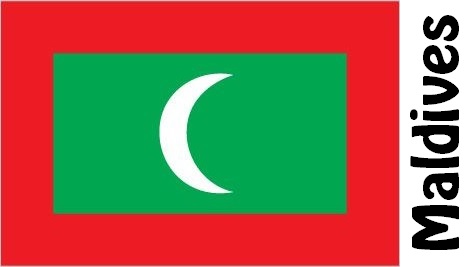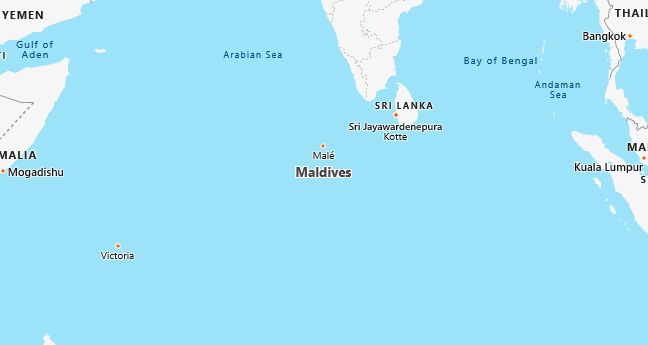Maldives Facts
Maldives, state and archipelago of the northern Indian Ocean; 298 km², 516 000 residents (2019).The Maldives consists of nineteen atolls with 1,800 islands, of which about 200 are inhabited. The northernmost island is located 370 km southwest of India’s southern tip. The capital is Male (134,200 residents, 2012).

Country facts
- Divehi Jumhuriyya / Republic of Maldives
- Country abbreviation: MV
- Area: 298 km²
- Population (2019): 516,000 residents
- Capital: Male
- Main language: divehi
- State: Republic
- Head of State and Head of Government: Ibrahim Muhamed Solih (President)
- Per capita GDP (2018): US $ 10 224
- GNI per capita (2018): US $ 9,310
- Currency unit: 1 rufiyaa = 100 laari
- Currency code: MVR
- Country dialing (telephony): 960
- Internet domain names: etc.
- Time difference compared to Sweden: +4
- National Day: July 26 (Independence Day, 1965)
Nature
- Land use: forest (3%), agricultural land (10%), other (87%)
- Highest point: unnamed hill on the island of Wilingili (2 m above sea level)
Population
- Population density (2019): 1,732 residents per km²
- Natural population growth (2019): 1.7%; birth rate 18 ‰, death rate 4 ‰
- Age structure (2019): 0-14 years (21%), 15-64 (75%), 65- (4%)
- Life expectancy (2019): men 77 years, women 80 years
- Infant mortality (2019): 18 per 1,000 live births
- Population forecast 2050: 600,000 residents
- HDI (2017): 0.717 (place 101 of 189)
- Urbanization rate (2019): 41%
- Most populous city (2012): Male (134,200 residents)
Business
- Industry’s contribution to GDP (2015): agriculture (3%), industry (16%), service (81%)
- Export (2016): USD 240 million
- Main export products: fish, textiles
- Main exporting countries: France, Thailand, Germany
- Imports (2016): US $ 1,896 million
- Main import products: oil products, clothing, food
- Main Importing Countries: United Arab Emirates, Singapore, India
- Railway network: nothing in operation
The Maldives are made up of a wide range of coral islands, located on the deep-sea spine of the Maldives. The islands are very low, 2–6 m above sea level, but they are protected from the onslaught by sea waves through ring reefs and barrier reefs. The location of the islands just next to the equator and near India provides a tropical rainforest climate with monsoon character. Rainy season falls in May – August and dry season in December – March.
The Maldives became independent in 1965 and were then sultanate. Three years later, the country was proclaimed Islamic Republic. The president is appointed for five years and is now both head of state and head of government. The legislative assembly is elected for five years.
The Maldives economy is based mainly on fishing and tourism. Despite the lack of arable land and the lack of mineral resources, the country has had strong economic growth since the 1980s. It is mainly tourism that has contributed to this. Still, parts of the population live outside or on the brink of the monetary economy through fishing, coconut harvesting or farming for housing needs.
Maldives Map














































